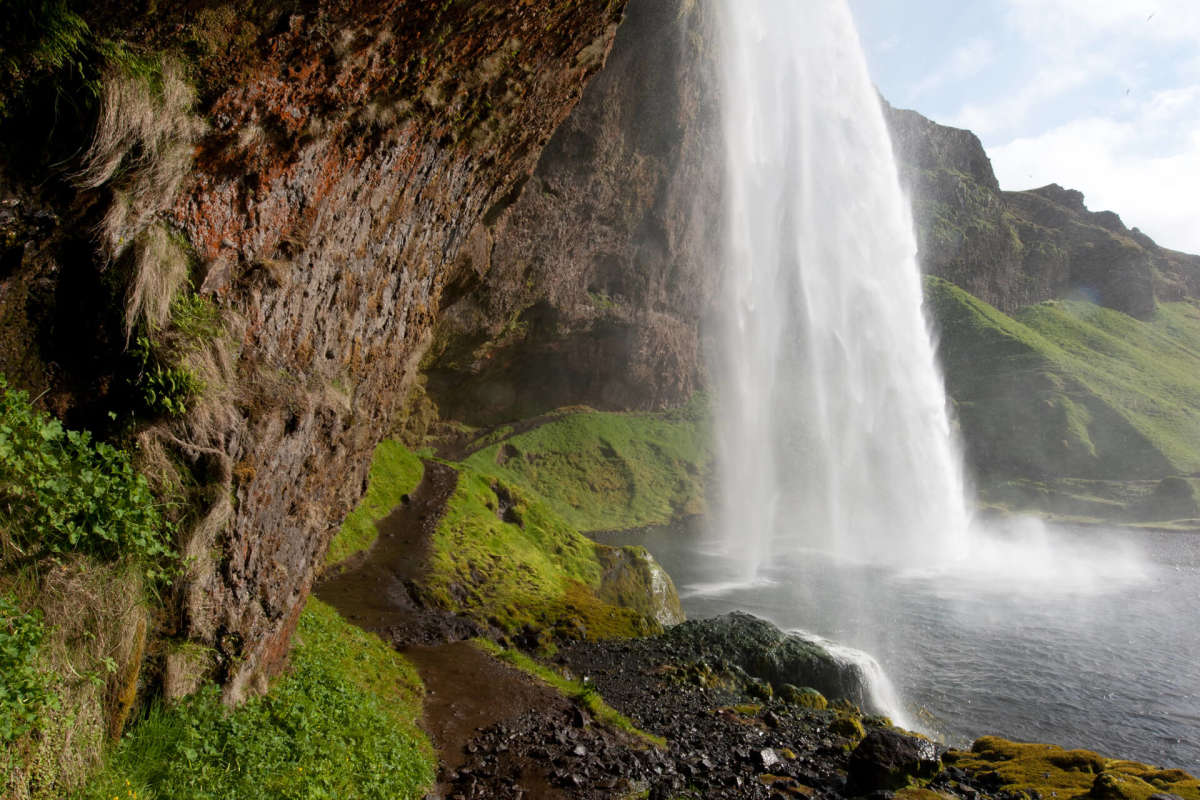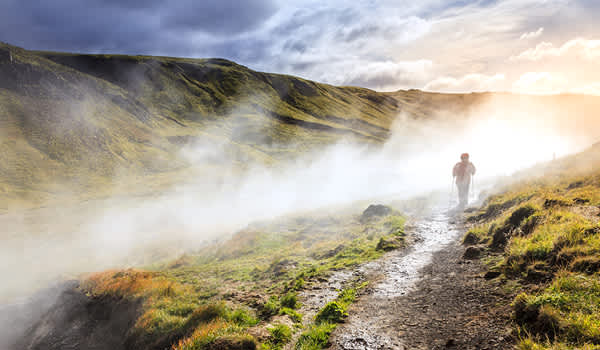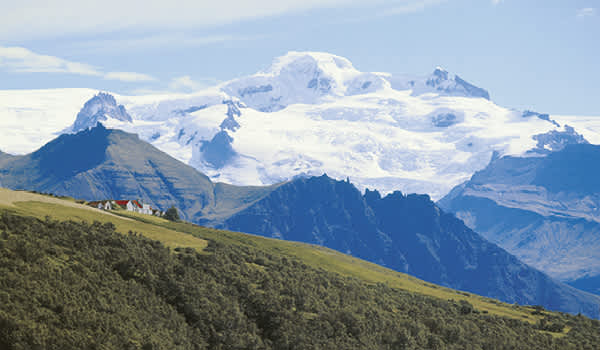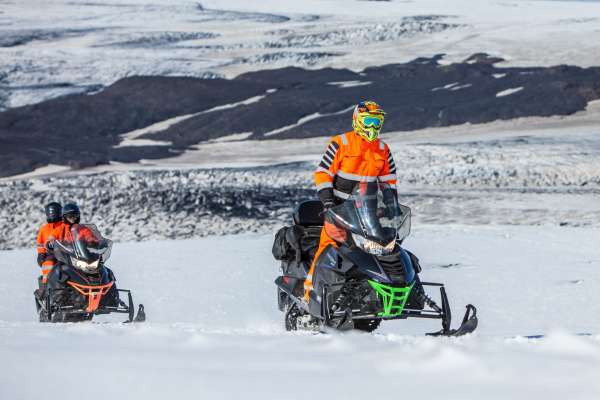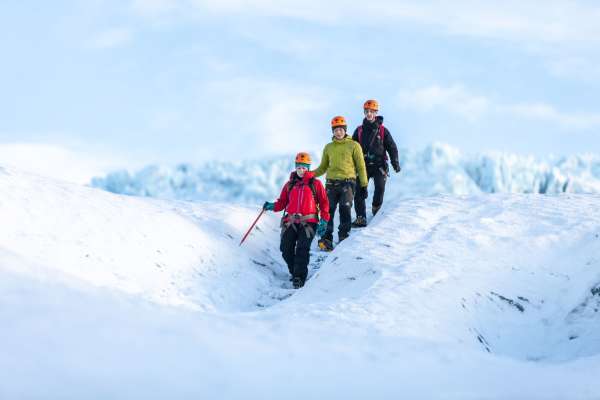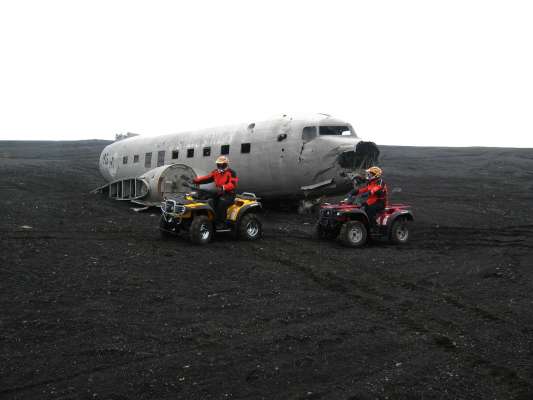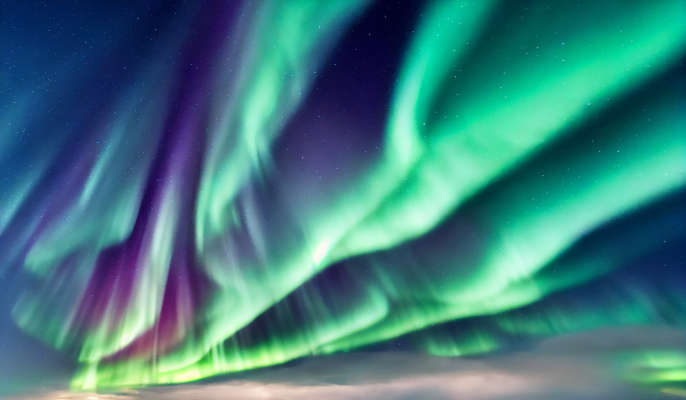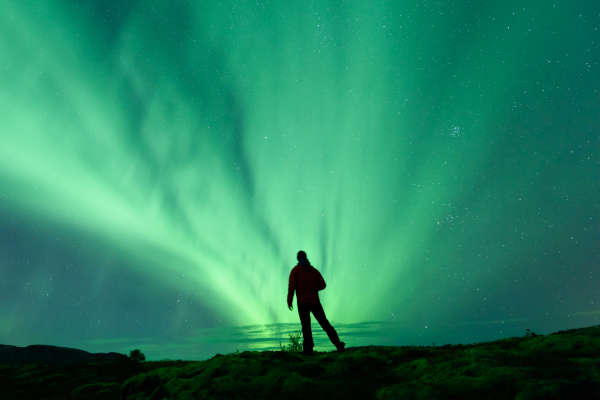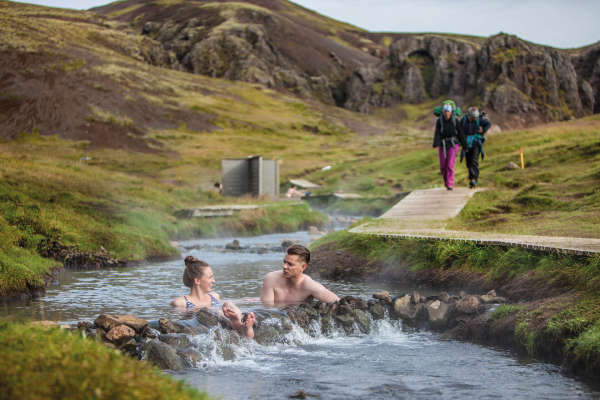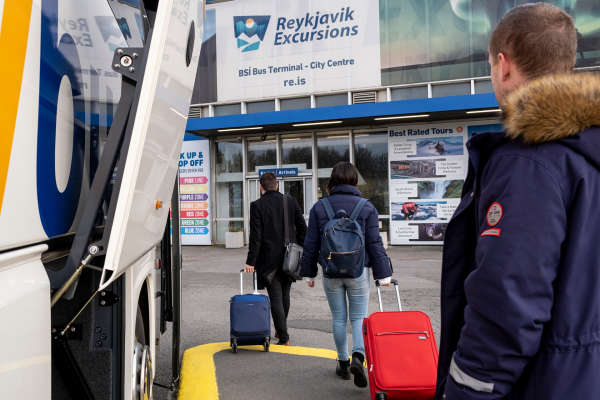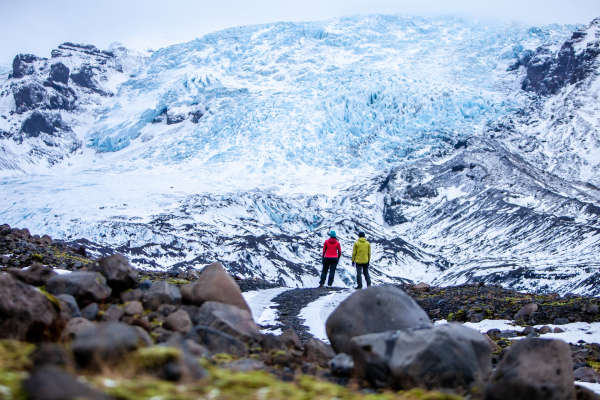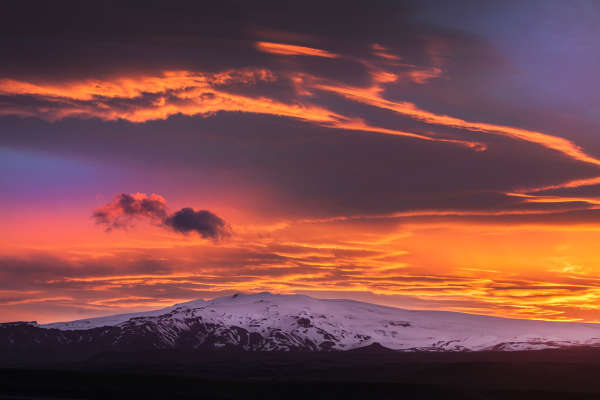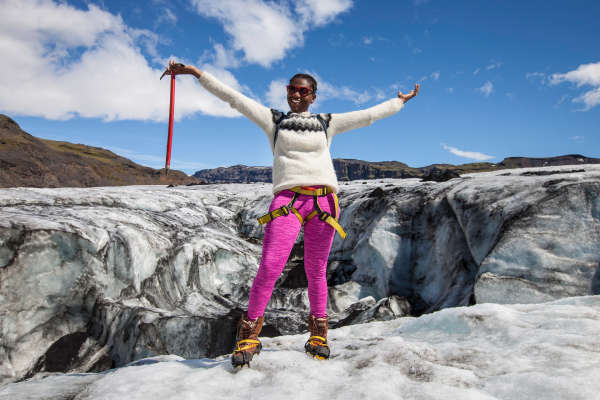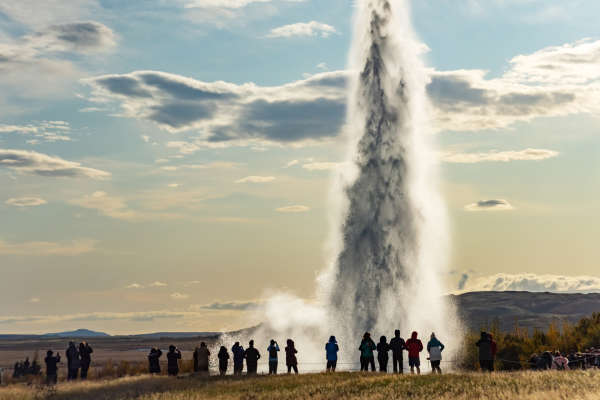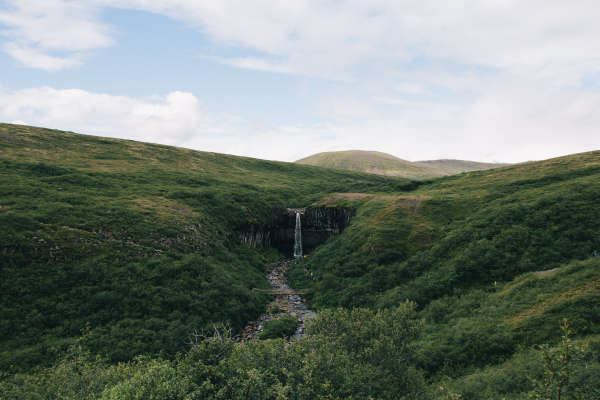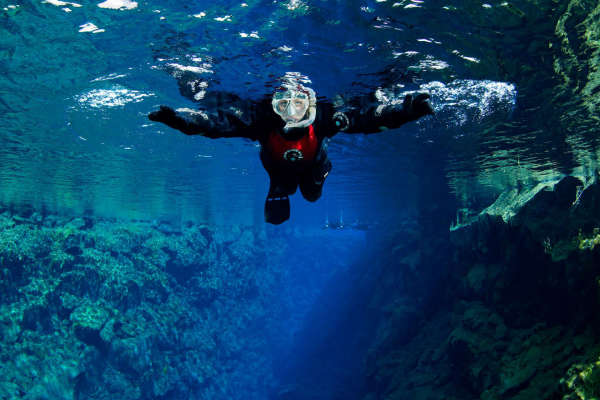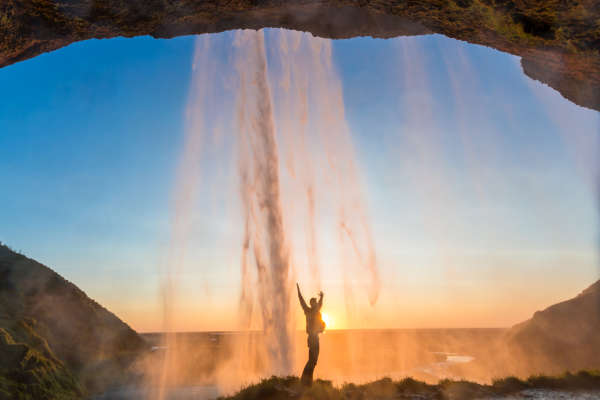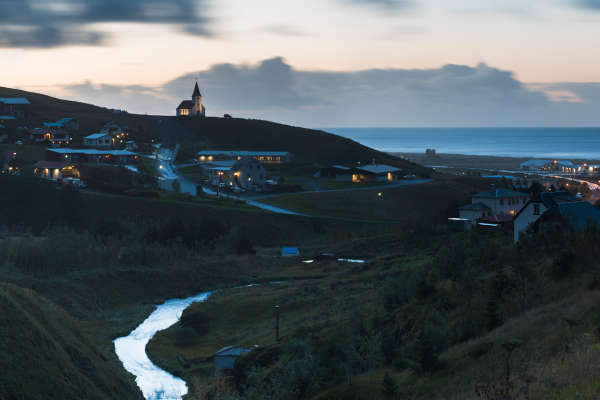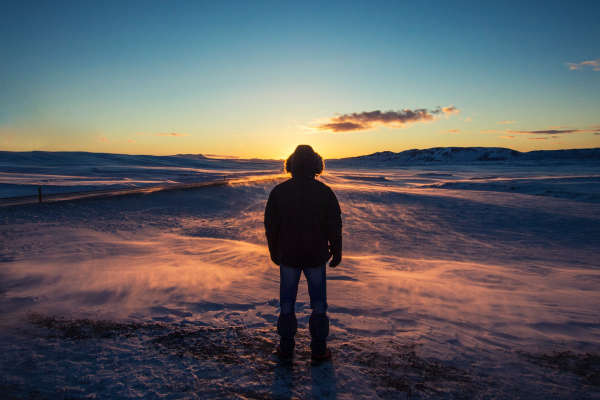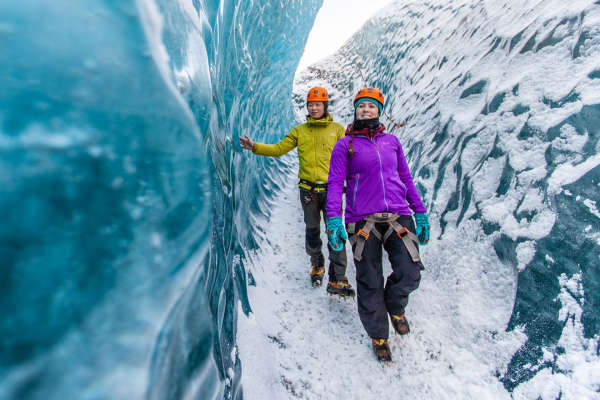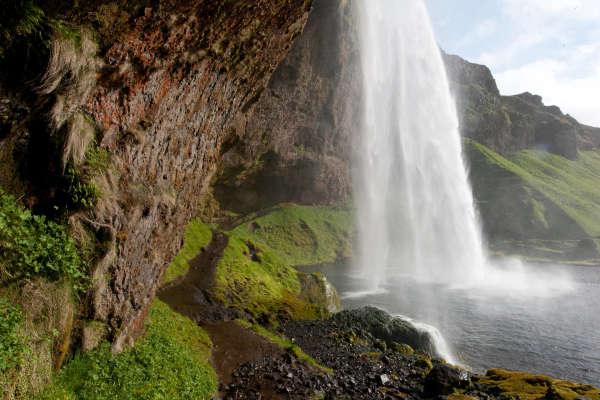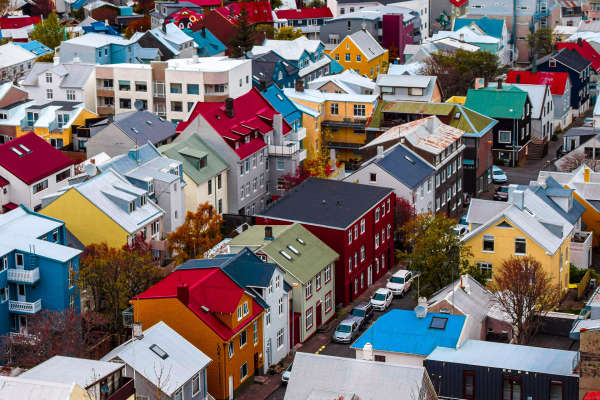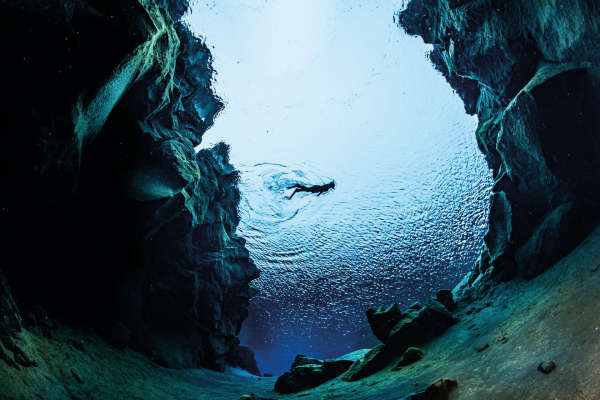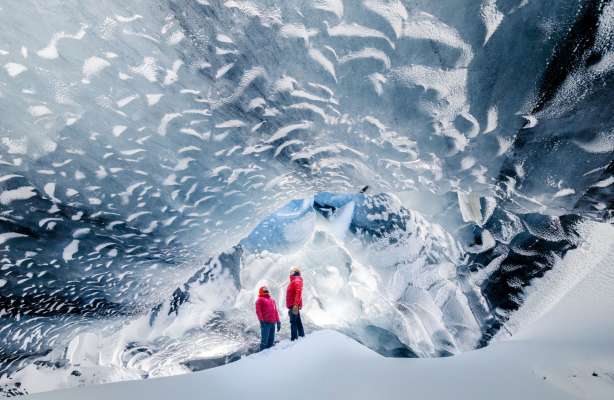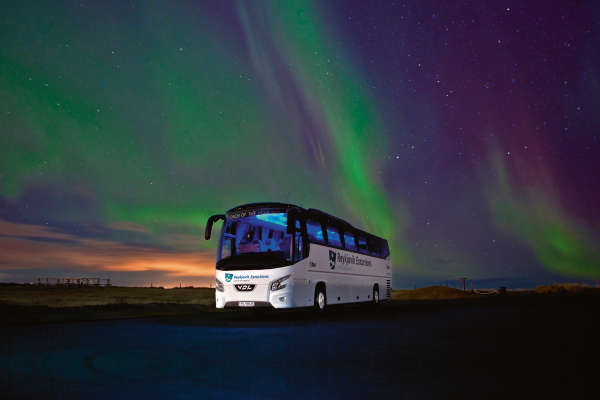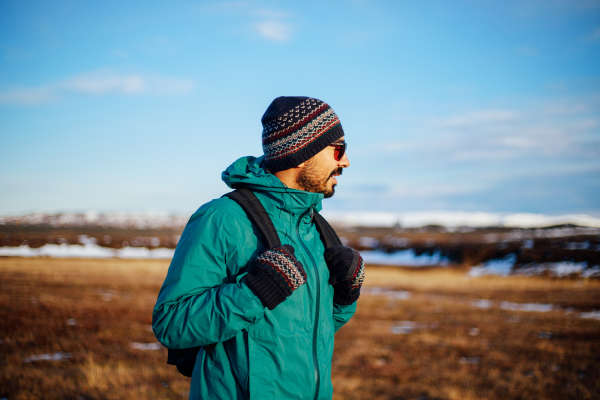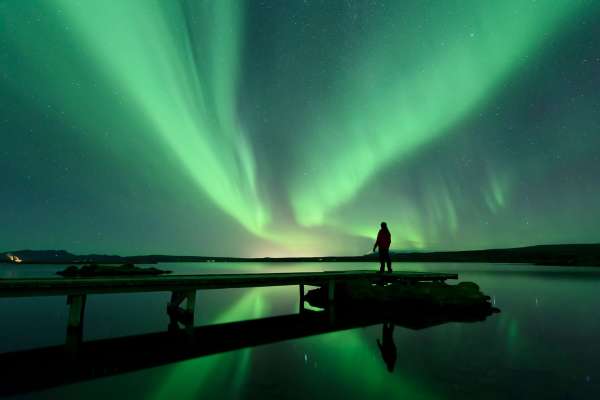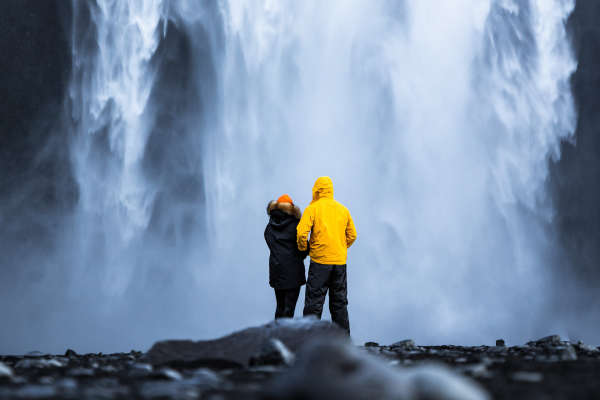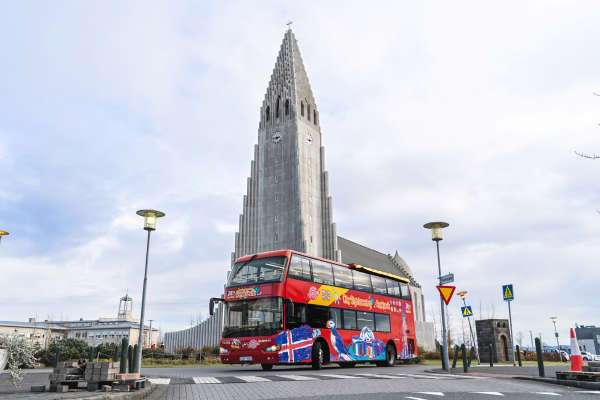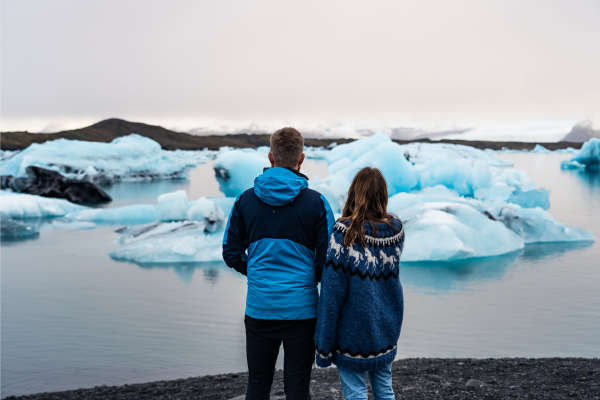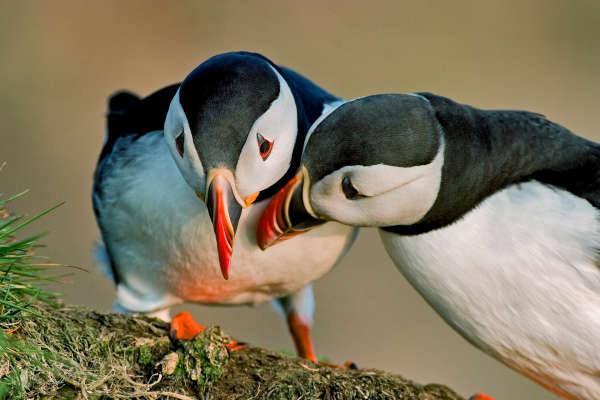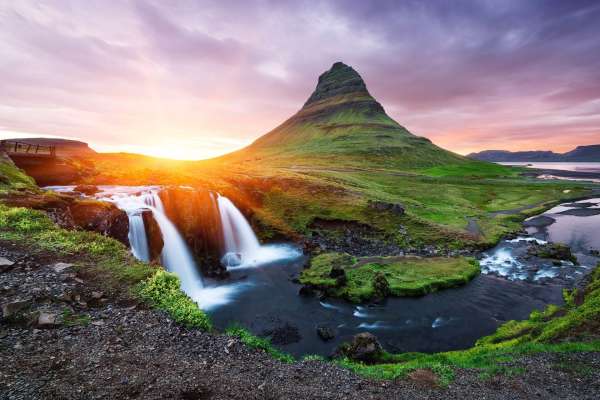Your Ultimate Guide to the South Coast of Iceland
The south coast of Iceland is home to some of the country’s most magical and marvellous natural wonders. Here, we show you what you’ve been missing.
April 20, 2022
Visit the south coast of Iceland and you’ll witness black sand beaches and active volcanoes, glacial lagoons and spectacular waterfalls. From Reykjavik in the west to Höfn in the east, Iceland’s southern shore is home to some of the country’s most marvellous destinations.
Your introduction to Iceland’s south coast
The south coast of Iceland is one of the country’s most popular and rewarding regions to visit. Hosting many of the most iconic sites in the Land of Ice and Fire — from historical towns to national parks and the ever–popular Golden Circle — no trip to Iceland is complete without a journey along its southern shore.
Luckily, this region is also really easy to visit for travellers. It’s only a short distance from Reykjavik, with many of the main sites comfortably reached within a day of the capital.
And for those who want to explore further, longer, multi-day trips are possible too. Iceland’s Ring Road—Route 1, that winds its way around the entire coast of Iceland—can take you through all of the south coast’s sites and beyond.
But what’s best to see along Iceland’s south coast? We’ll introduce you to all of the main sites. Let’s start with some of the most delightful towns and villages in the area.
Towns and villages on the south coast
Iceland is understandably better known for its natural wonders than for its human settlements. Yet that doesn’t mean that the towns on the south coast don’t have something to offer everyone travelling in the area.
Here are the highlights you should know, both as pit-stops and places to enjoy in their own right.
Hveragerði
Hveragerði is a town about 40 minutes’ drive south-east of Reykjavik. It’s typically a first stop on any trip across the south coast.
The town itself—home to about 2,500 people—is a cute and friendly place. But most travellers pass through to reach the Reykjadalur Valley, or “Smoke Valley”. This green vale is best known for the river and pools that are naturally heated by geothermal springs.
The valley is a remarkable place to bathe in natural warm water, or else explore on foot.
Selfoss
15 minutes down the road from Hveragerði is Selfoss. It’s the largest town in the southwest outside of Reykjavik.
The town sits on the banks of Iceland’s largest river, Ölfusá, which journeys from Iceland’s glaciers to the sea. This strategic position made it an important location during World War II, when the British army occupied the town’s bridge.
Today, the town is coming into its own. A new cultural centre opened in 2021. Alongside the town’s renowned summer festival, it has helped to make the town an important cultural destination.
Hella
If you’re travelling on the Ring Road, Hella is the next town you’ll pass after Selfoss. It takes its name from the mysterious caves nearby, which are believed to have been inhabited by Irish monks during Iceland’s settlement.
Hekla, one of Iceland’s most active volcanoes, is not far. It’s a popular destination for an adventurous hike. You can buy hiking passes from Hella and Hvolsvöllur directly from us.
Hvolsvöllur
Hvolsvöllur is just over 100 kilometres (62 miles) from Reykjavik. It can be a great base for exploring the south coast and the Golden Circle if you don’t want to stay in the capital.
The town’s Lava Centre is a fascinating museum where you can learn about the region’s volcanic and geological history. It’s an interactive way to discover the amazing processes that created Iceland over the last 20 million years.
And, close to the town, you can also see Seljalandsfoss and Skógafoss, two of the most truly incredible waterfalls in southern Iceland (more on those below).
Vík
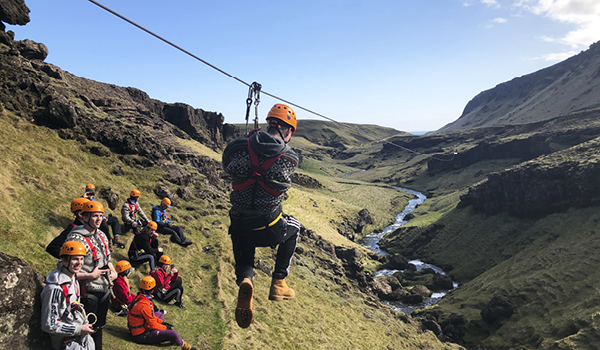
Surrounded by stark cliffs and vertiginous sea-stacks, and with the Mýrdalsjökull ice sheet close by, Vík í Mýrdal is one of the most picturesque villages in southern Iceland.
The coastal settlement’s gorgeous natural beauty aside, there are some real adventures to be had nearby. A short distance from the village, try the Zipline Adventure, four zipline rides through this sublime landscape.
Alternatively, experience the Icelandic Lava Show. It’s an exhilarating way to witness lava up close as it emerges from the Katla volcano. There’s literally nowhere else in the world you can see it like this.
While only home to 700 people, Vík is the largest settlement for 70 km (43 miles) and will be an important stop on any route around the area.
Kirkjubæjarklaustur
By the time you reach Kirkjubæjarklaustur, the only stop-off point between Vík and Höfn, you’ll be about 190 km (118 miles) east of Reykjavik. But the village has an astonishing history which makes it much more than just a pit-stop.
Kirkjubæjarklaustur is believed to have been home to Irish monks who settled in the area even before the first Norse people arrived. What’s more, the village was home to a community of Benedictine nuns from the 12th to 16th centuries.
Höfn
The furthest settlement from Reykjavik on Iceland’s south coast is Höfn. The name of this lively fishing town means ‘harbour’. It’s understandable why: it sits on a peninsula that extends south into the Atlantic Ocean and it’s surrounded on three sides by sea.
Aside from its splendid location at the Hornafjörður fjord, one of the town’s biggest draws is the Vatnajökull National Park that sits to the northwest. It’s the largest glacier in Europe.
The Golden Circle
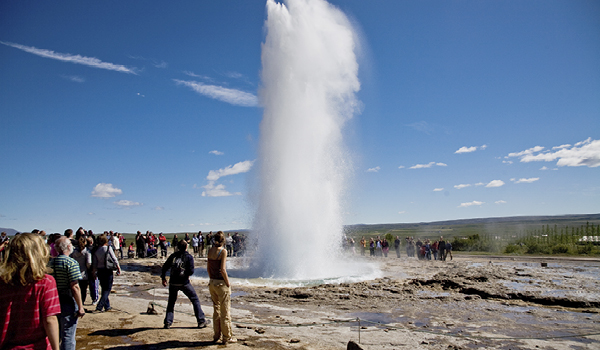
Of course, in any discussion of Iceland’s south coast, a mention of the Golden Circle is never far behind. One of the most popular itineraries in Iceland, the Golden Circle is a magical journey that takes in three of south Iceland’s most famous destinations:
Gullfoss Waterfall
Gullfoss is also one of Europe’s largest waterfalls and definitely one of its most beautiful. Witness its glacial waters surge down two dramatic steps before racing through a tight crevasse. Its wild beauty is wonderful to see at any time of year.
Geysir Geothermal Park
This is where Iceland reveals some of its most thrilling volcanic activity. The area gives its name to geysers, the geothermal marvel in which hot water is propelled from the ground high into the air. But there’s plenty more to see too—including hot springs and fumaroles, bubbling volcanic holes in the ground.
Þingvellir National Park
Þingvellir is a UNESCO World Heritage Site and the historic location of Iceland’s first parliament. Explore an array of geographical wonders, such as Þingvallavatn, the largest natural lake in Iceland. Find it in the Mid-Atlantic Ridge, where the Eurasian tectonic plate meets the North American plate.
Explore these amazing locations on our classic Golden Circle tour, or discover more in our ultimate guide to the Golden Circle in Iceland.
What to see on the south coast of Iceland
While the Golden Circle often steals the limelight, you should know that there’s a lot more to see than just these three classic sights.
Here, we take you through everything that south Iceland has to offer—from waterfalls and glaciers, to black sand beaches and lagoons.
1. Seljalandsfoss Waterfall
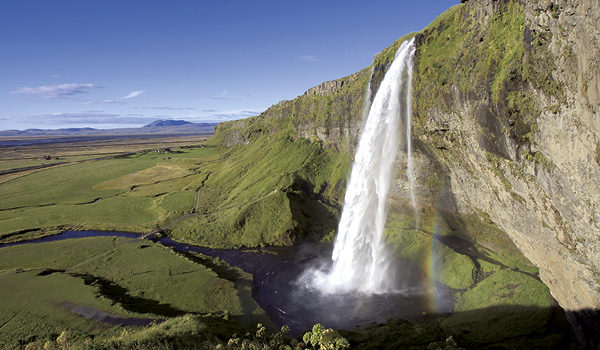
Seljalandsfoss Waterfall is one of the truly must-see sights on the south coast of Iceland. Why? Because it offers a unique, breath-taking experience: you can walk behind its tumbling waters.
Thanks to the particular way that the cliff is formed, a footpath winds behind the Seljalandsá river that cascades 40 metres (131 feet). This fact turns the natural beauty of Seljalandsfoss into an unforgettable and unique immersive experience.
2. Skógafoss Waterfall
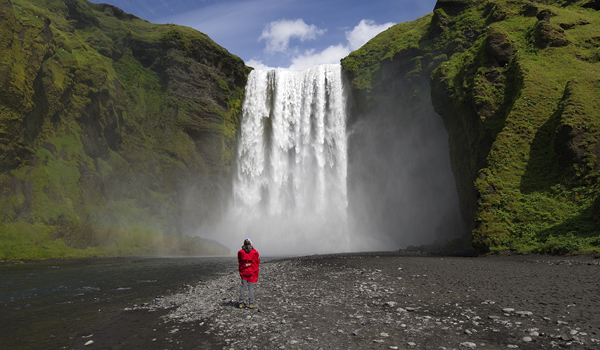
Not far from Seljalandsfoss, Skógafoss is another superb waterfall on Iceland’s southern coast. In fact, Skógafoss boasts the title of being one of the tallest waterfalls in Iceland, with water plunging from a height of 60 metres (197 feet).
The noise—and the huge clouds of spray the waterfall throws up—are simply awesome. It makes a particularly incredible sight to see Skógafoss draped in ice and snow during winter.
Like Seljalandsfoss, Skógafoss is best accessed from the town of Hvolsvöllur.
3. Eyjafjallajökull Glacier
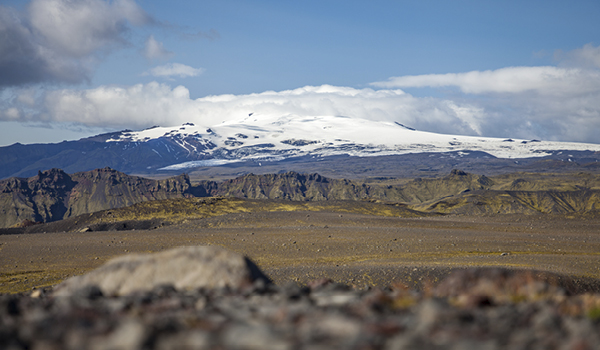
While it may be one of the smallest ice caps in Iceland, the Eyjafjallajökull Glacier has a massive reputation. That’s because the volcano that it covers—Eyjafjallajökull—caused serious disruption to Europe’s air traffic when it erupted in 2010.
The volcano itself reaches 1,651 metres (5,427 feet) and it’s one of the dominant sights on the south coast. But don’t worry—it’s now entirely safe to visit. Visit the museum and visitor centre in Hvolsvöllur to hear some of the astonishing stories of the eruption.
Alternatively, you can explore Eyjafjallajökull in a Super Jeep on our South Coast and Eyjafjallajökull tour.
4. Sólheimajökull Glacier
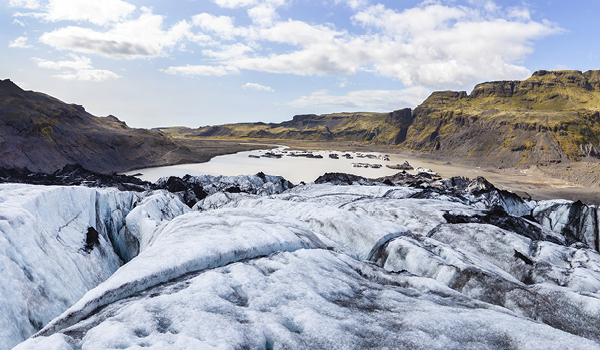
Sólheimajökull Glacier is part of the Mýrdalsjökull Glacier (more on this below). Only a short distance from Iceland’s Route 1, it’s a really accessible location for a popular glacier hike tour. Equipped with crampons, a harness, and ice axe, and led by a trained expert guide, journey across this awe-inspiring place and explore serene, otherworldly views.
Sólheimajökull is probably the most popular destination for a glacier hike from Reykjavik. But it’s not recommended to walk across the glacier without a guide unless you have the necessary experience.
5. Douglas DC-3 plane wreck—Sólheimasandur
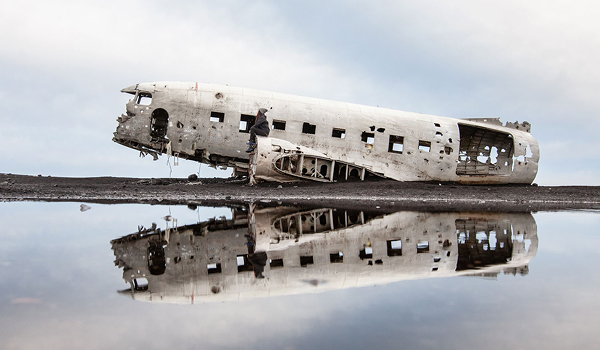
Alongside its natural beauty, Iceland has its fair share of historical curiosities too. One of them is the wreckage of a US Navy plane that in 1973 crashed into the black sands of Sólheimasandur, between Hvolsvöllur and Vík.
It makes for an eerie, fascinating visit, with the rusted ruins of the aircraft deserted on the sandy plain. You can experience the strange atmosphere that surrounds the wreckage by taking the Plane Wreck Shuttle, which runs frequently from the Sólheimasandur parking lot to the Plane Wreck. Alternatively, you can do the flat 45-minute walk there on foot.
Another option is to venture across the landscape in an all-terrain vehicle, in our plane wreck ATV adventure.
6. Reynisfjara Black Sand beach
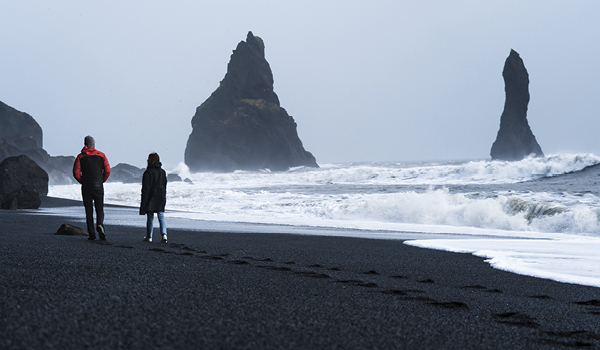
Between Vík and the peninsula of Dyrhólaey, you’ll find Reynisfjara beach. It’s one of the most incredible examples of the volcanic shorelines you can find along the south coast.
Reynisfjara has been recognised as one of the most beautiful beaches in the world—and for good reason. With its high cliffs, black sand, and the magnificent sea stacks that emerge just off the coast, it’s not a place to be missed.
But watch out. With strong unpredictable tides and Iceland’s ever volatile weather, the beach is wild. Not the best place for a dip!
7. Mýrdalsjökull glacier
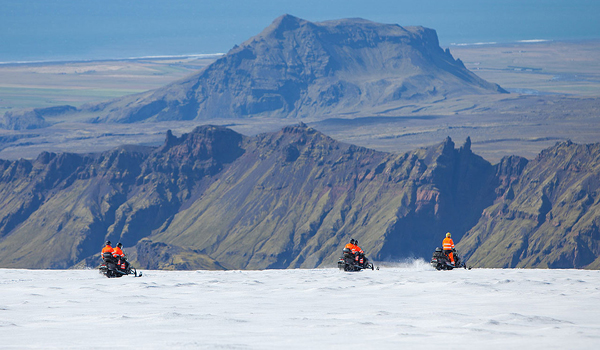
Mýrdalsjökull is a glacier that covers the mighty volcano of Katla—which threatens to erupt every half a century. It’s a place that lives up to Iceland’s promise of ice and fire.
There are many awesome experiences that Mýrdalsjökull offers. Think glacier hiking, ice caving, or ice climbing — or the perfect combination of them all.
Active adventures aside, you can also drive across the glacier on a snowmobile. Or just witness its majesty from a distance.
8. Fjaðrárgljúfur canyon
The product of thousands of years of erosion, the canyon of Fjaðrárgljúfur is a dramatic and pristine river valley that sits just before Kirkjubæjarklaustur on the road east.
With its steep cliffs and gently babbling brook below, it’s a truly spectacular sight. That’s presumably why Justin Bieber decided to use the location to shoot his music video for “I’ll Show You”.
While access has been limited due to the sheer number of enthusiastic visitors, you can still see the wonders of the canyon for yourself. Take a walk up to the popular viewpoints—or venture into the canyon alongside the tranquil stream.
9. Skaftafell Nature Reserve
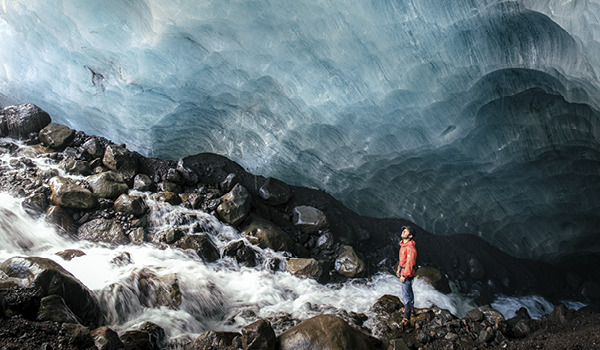
Skaftafell is a natural reserve that makes up part of the Vatnajökull National Park. It’s the wildest and most untouched area of the larger park, and it’s a fantastic location for short hikes and photo opportunities, or just to take in the sublime scenery of southern Iceland.
Explore the area to your heart’s content—or let a local guide take you to the most famous locations. Svartifoss Waterfall (“black waterfall”), for example, is one of the most fascinating sites in the park, with its dark, sharp rock formations.
If you are feeling adventurous, climb the Hvannadalshnúkur, Iceland’s highest mountain. Alternatively, discover ice caves and glaciers across the reserve too with our great partners at Icelandic Mountain Guides.
10. Jökulsárlón glacier lagoon
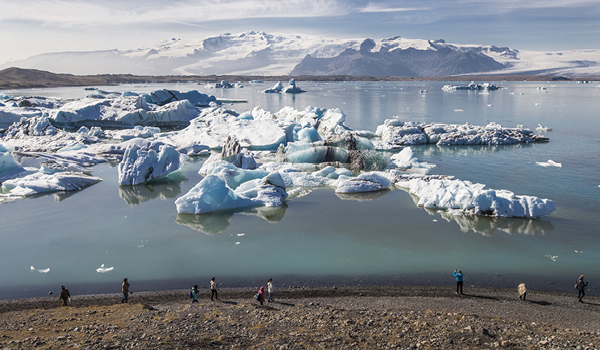
Located between Skaftafell and Höfn, Jökulsárlón is probably the most famous glacial lagoon in Iceland. It’s a gorgeous lake that is fed by the melting ice of part of the Vatnajökull ice cap. As a result, it’s often populated by icebergs that break from the glacier.
Yes, it’s beautiful—but it also shows the impact on Iceland of changing global temperatures. Jökulsárlón hasn’t been there forever. In fact, it only formed in the 1930s, and has been growing ever since. It makes for a captivating and thought-provoking site.
11. Diamond Beach
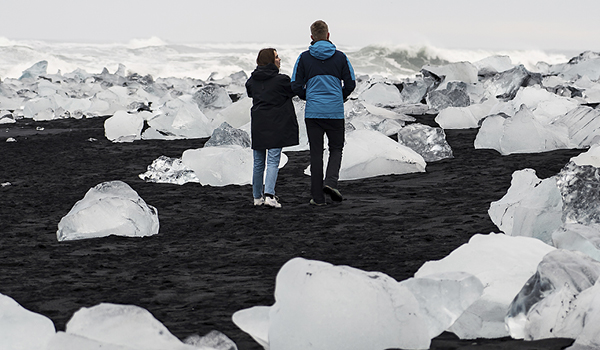
Close to the Jökulsárlón lagoon is one of the most surprising landforms in Iceland. Imagine a black sand beach, created from the remains of volcanic rock. But then picture its vast beauty strewn with diamond-like shards of ice. You won’t see anything like Diamond Beach anywhere else.
Part of the Diamond Beach’s charm is that, among these diamonds, you can often see seals. And out in the sea itself, it’s a common spot to glimpse killer whales.
12. Vatnajökull National Park
Vatnajökull is one of the three national parks in Iceland, covering about 14% of Iceland’s entire land. It’s a UNESCO World Heritage Site and it’s home to Europe’s largest glacier.
Yet it’s not just size that matters. Here you’ll find ice caves, hiking trails, volcanoes and mountains, rivers and waterfalls. Of course, you’ll also discover the majesty of the Vatnajökull glacier itself, which reaches a kilometre thick in places.
Given its size, you won’t be able to do everything in Vatnajökull. But whatever you do decide to do, it will be something you never forget.
Visiting the South Coast of Iceland
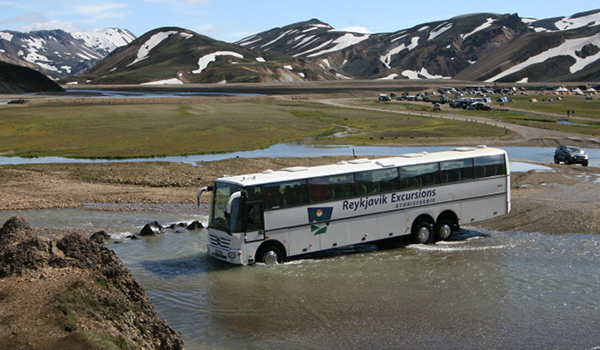
Whatever your interests, the south coast of Iceland is an unmissable region—at any time of year.
While many travellers take the opportunity to stay in one of the villages along the coast, the area is easily reachable by bus from Reykjavik in a day. The Seljalandsfoss and Skógafoss waterfalls, for example, are less than two hours by road from Iceland’s capital.
At Reykjavik Excursions, we offer day tours to the main sights across the south coast, every day, no matter the time of year.
We recommend booking in advance. While you can cancel up to 24 hours in advance without charge, it will guarantee you a seat—and remove the hassle of booking on the day.
What’s the best time of year to visit Iceland’s south coast?
There isn’t a best time to visit the south coast of Iceland.
During the summer, you’ll see the region in its coat of green, with the snows melting and temperatures rising into the double digits. But between November and April, you can experience Iceland in all its serene wintry beauty.
Whenever you come, you’ll experience some of the most magical natural landforms on the planet.
Book your South Coast tour with Reykjavik Excursions
There’s so much to see on the South Coast of Iceland. At Reykjavik Excursions, we can help you see all of the major sites in comfort and style.
If you want to enjoy a tour of the Golden Circle, we run tours every day throughout the year. Alternatively, we can take you on day trips from Reykjavik as far as Jökulsárlón, the Diamond Beach, and Vatnajökull.
Or for those with a bit more time to spare, we can help you arrange multi-day tours of the South Shore too.
Wherever you want to explore, trust Reykjavik Excursions to handle the journey. Explore our South Iceland tours to start your adventure.
Tours in the spotlight
5 Tours
REYKJAVIK EXCURSIONS BLOG
Get inspired! Information and tips and must see places in Iceland, fun facts, customs and more.
Snorkeling and Diving in Iceland - Your Guide
Discover the best Iceland snorkeling and scuba diving sites with our ultimate guide to Snorkeling and Diving in Iceland.
Read Blog